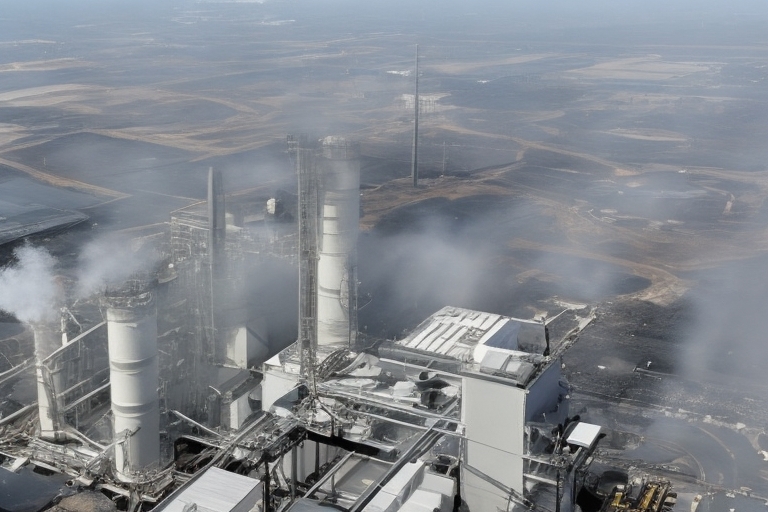In the face of escalating climate change concerns, Carbon Dioxide Removal (CDR) emerges as a critical protagonist in the quest for a sustainable future. CDR, encompassing a spectrum of natural and engineered methods, endeavors to actively extract carbon dioxide from the atmosphere, addressing the root cause of global warming.
Carbon Dioxide Removal (CDR) refers to a set of technologies and approaches aimed at actively removing carbon dioxide (CO2) from the Earth's atmosphere. The primary goal of CDR is to mitigate climate change by reducing the concentration of CO2, a major greenhouse gas responsible for trapping heat in the atmosphere and contributing to global warming. Picture this: the Earth is like a cozy room, and carbon dioxide (CO2) is the unwanted guest that overstays its welcome, causing the temperature to rise and wreaking havoc on the climate. CDR is like the superhero swooping in to save the day by kicking out that troublesome guest, CO2. It's all about capturing and getting rid of the excess carbon dioxide hanging around in the atmosphere. Think of it as a giant vacuum cleaner for the air, helping us clean up our mess and work towards a cooler, healthier planet. It encompasses an array of strategies aimed at actively extracting carbon dioxide from the atmosphere and storing it in various forms. The goal is not only to curb the increase in atmospheric CO2 levels but also to reverse the adverse effects of human activities on the climate.
1. Direct Air Capture (DAC)
Direct Air Capture involves the extraction of carbon dioxide directly from the ambient air. Specialized chemical processes absorb CO2, allowing for its isolation and storage. This technology plays a critical role in reducing atmospheric CO2 levels and addressing climate change. DAC systems typically use sorbents or solvents to capture CO2, followed by a regeneration process where the captured CO2 is separated for storage or utilization. While DAC shows promise, its current implementation faces challenges related to energy consumption and cost-effectiveness.
2. Ocean-based CDR
a. Ocean Fertilization
Ocean fertilization aims to enhance the ocean's natural carbon absorption capacity by adding nutrients (like iron or nitrogen) to stimulate the growth of phytoplankton. These microscopic organisms absorb carbon dioxide during photosynthesis, and when they die, they sink to the ocean floor, sequestering carbon. This method is controversial due to potential ecological impacts and uncertainties about its long-term effectiveness.
b. Direct Injection
Direct Injection involves injecting liquid CO2 directly into deep ocean waters, where it can dissolve and form stable compounds. This process prevents the released carbon dioxide from re-entering the atmosphere. However, concerns exist about the potential environmental consequences, such as changes in ocean chemistry and impacts on marine life.
c. Ocean Alkalinity Enhancement
Ocean Alkalinity Enhancement involves adding alkaline substances, like limestone, to the ocean. This enhances the water's ability to absorb and store CO2. The increased alkalinity promotes the formation of bicarbonate ions, which react with atmospheric CO2. Despite its potential, this method raises ecological concerns and requires careful consideration of its implications.
3. Afforestation and Reforestation
Afforestation involves planting trees in areas that were not previously forested, while reforestation involves replanting in deforested regions. Both methods contribute to carbon sequestration by enhancing the capacity of forests to absorb and store carbon dioxide through photosynthesis. Afforestation and reforestation also provide additional ecological benefits, such as biodiversity conservation and ecosystem restoration.
4. Bioenergy with Carbon Capture and Storage (BECCS)
BECCS combines bioenergy production with carbon capture and storage. Biomass, such as crops or forest residues, is used for energy production. The resulting carbon emissions are then captured and stored underground, preventing them from entering the atmosphere. BECCS has the potential to generate negative emissions, but challenges include land-use competition and sustainability concerns related to biomass production.
5. Enhanced Weathering
Enhanced Weathering involves accelerating the natural process of rock weathering to absorb CO2. Finely ground minerals, such as olivine, are spread on the Earth's surface, reacting with atmospheric CO2 to form stable carbonates. This method shows promise, but its scalability, environmental impact, and logistical challenges need careful consideration.
Conclusion:
Carbon dioxide removal is seen as a crucial component of comprehensive climate change mitigation strategies. As the concentration of carbon dioxide in the Earth's atmosphere continues to rise, CDR emerges as a proactive and strategic approach to mitigate the impacts of global warming. The diverse array of methods, ranging from natural processes like afforestation to sophisticated engineered solutions such as direct air capture, underscores the complexity and urgency of the challenge at hand. CDR holds the potential to contribute significantly to the collective mission of safeguarding the Earth for current and future generations.

